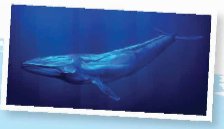Read the article again. Choose the correct answer A, B, C, or D.1. The purpose of writing the article is _____ in the mass media.A. to advertise AIB. to introduce the benefits of AIC. to help readers avoid using AID. to describe an AI robot2. Which of the following benefits of Al in journalism is NOT mentioned?A. AI can change data into various forms.B. AI can help people avoid unsuitable information.C. AI can help journalists express their opinions.D. AI can identify whether the information is...
Đọc tiếp
Read the article again. Choose the correct answer A, B, C, or D.
1. The purpose of writing the article is _____ in the mass media.
A. to advertise AI
B. to introduce the benefits of AI
C. to help readers avoid using AI
D. to describe an AI robot
2. Which of the following benefits of Al in journalism is NOT mentioned?
A. AI can change data into various forms.
B. AI can help people avoid unsuitable information.
C. AI can help journalists express their opinions.
D. AI can identify whether the information is true or not.
3. Why does the author mention 'facial recognition' in Section B?
A. To support an idea.
B. To illustrate a contrast.
C. To give a reason.
D. To give a description.
4. What can be inferred about television in Section C?
A. TV viewers can watch more live TV shows.
B. There are more special effects on live TV programmes.
C. It has not benefited from AI.
D. AI makes it easier for people to choose their favourite programmes.


A. They were hunted for commercial purposes.
(Chúng bị săn bắt vì mục đích thương mại.)
B. They are hit by large ships.
(Chúng bị tàu lớn đâm phải.)
D. They eat pieces of plastic.
(Chúng ăn những mảnh nhựa.)
E. They find it hard to find food in warming oceans.
(Chúng khó tìm được thức ăn trong đại dương đang nóng lên.)
Bài nghe:
Ms Smith: Now we are heading towards the shark lagoon in the Central Aquarium.
Nam: Can we also see blue whales and dolphins?
Ms Smith: I'm afraid you can't. These animals shouldn't be kept in captivity. It's also impossible to build a suitable habitat for the blue whale.
Mai: The blue whale is the largest animal on Earth, isn't it?
Ms Smith: That's right. It can weigh as much as 30 elephants. It's longer than the longest jumbo jet.
Nam: Wow! Amazing! But are these animals an endangered species?
Ms Smith: Yes, they're classified as endangered on the IUCN Red List. Before the 1920s they were considered too difficult to hunt because of their size and speed. However, technological advancement gave rise to the hunting and killing of whales. It became a profitable business, and more than 340,000 blue whales were killed in the first half of the 20th century.
Mai: So how many blue whales are left now?
Ms Smith: Scientists estimate that the current population is between 10,000 and 25,000 individuals.
Mai: Do they face other threats?
Ms Smith: Unfortunately, large cargo or cruise ships also pose a threat to blue whales, which get hit by these huge boats especially at night when they feed near the water surface.
Nam: That's very sad! How about pollution? Has it affected the blue whale?
Ms Smith: Yes, it has. Our oceans are filling up with plastic so blue whales could be swallowing 10 million pieces of plastic every day. Another threat is climate change. Rising temperatures are causing a decline in their food sources.
Nam: So what can we do to protect them? ...
Tạm dịch:
Cô Smith: Bây giờ chúng ta đang hướng đến đầm cá mập ở Thủy cung Trung tâm.
Nam: Chúng ta cũng có thể nhìn thấy cá voi xanh và cá heo không ạ?
Cô Smith: Cô e là các em không thể. Những loài động vật này không nên bị nuôi nhốt. Cũng không thể xây dựng một môi trường sống phù hợp cho cá voi xanh.
Mai: Cá voi xanh là loài động vật lớn nhất trên Trái Đất, phải không ạ?
Cô Smith: Đúng vậy. Nó có thể nặng bằng 30 con voi. Nó dài hơn cả máy bay phản lực khổng lồ dài nhất.
Nam: Wow! Thật tuyệt! Nhưng những loài động vật này có phải là loài có nguy cơ tuyệt chủng không ạ?
Cô Smith: Có, chúng được phân loại là loài có nguy cơ tuyệt chủng trong Sách đỏ IUCN. Trước những năm 1920, chúng được coi là quá khó để săn bắt vì kích thước và tốc độ của chúng. Tuy nhiên, sự tiến bộ về công nghệ đã làm nảy sinh hoạt động săn bắt và giết cá voi. Hoạt động này đã trở thành một ngành kinh doanh có lợi nhuận và hơn 340.000 con cá voi xanh đã bị giết trong nửa đầu thế kỷ 20.
Mai: Vậy hiện nay còn lại bao nhiêu con cá voi xanh ạ?
Cô Smith: Các nhà khoa học ước tính rằng quần thể hiện tại là từ 10.000 đến 25.000 cá thể.
Mai: Chúng có phải đối mặt với những mối đe dọa khác không?
Cô Smith: Thật không may, các tàu chở hàng lớn hoặc tàu du lịch cũng gây ra mối đe dọa cho cá voi xanh, chúng thường bị những chiếc thuyền lớn này đâm phải, đặc biệt là vào ban đêm khi chúng kiếm ăn gần mặt nước.
Nam: Thật đáng buồn! Còn ô nhiễm thì sao ạ? Nó có ảnh hưởng đến cá voi xanh không ạ?
Cô Smith: Có chứ. Đại dương của chúng ta đang tràn ngập nhựa nên cá voi xanh có thể nuốt 10 triệu mảnh nhựa mỗi ngày. Một mối đe dọa khác là biến đổi khí hậu. Nhiệt độ tăng cao đang khiến nguồn thức ăn của chúng suy giảm.
Nam: Vậy chúng ta có thể làm gì để bảo vệ chúng? ...
Trả lời bởi datcoder